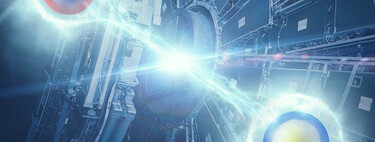The most accurate estimate that astrophysicists have made so far argues that the universe is made up of 66.2% dark energy, 28.8% dark matter, and the remaining 5% It is monopolized by conventional matter with which we are all familiar. And of which we ourselves are made. It is very surprising, even a little disturbing, that the matter we can observe represents only 5% of the fundamental ingredients of the cosmos.
The best tool cosmologists have for understanding the mechanisms that govern the behavior of the universe’s large structures is Einstein’s theory of general relativity. It has been tested countless times over the past century, and has so far always emerged unscathed. But finding a crack in such a solid and seemingly immovable theory is not a problem for scientists. Quite the opposite; it gives them the opportunity to develop new physics.
Two big questions still unanswered
Before moving on, we would like to establish two concepts. The first is dark energy, which is nothing more than a hypothetical type of energy that, according to a large part of the scientific community, justifies the current accelerated expansion of the universe. The other concept is known as early dark energy and identifies, again, a hypothetical class of energy that could have triggered the expansion of the universe in its first moments before fading away completely.
As we have just seen, when we talk about dark energy we enter the slippery field of hypotheses, and in this area the answers inevitably cannot be conclusive. Because, ultimately, that is what it is about. Finding the answer to The great enigmas of the cosmosAnd, according to a group of researchers from MIT (Massachusetts Institute of Technology), early dark energy may be The answer that physicists are looking for for decades to two big questions.
The “Hubble tension” refers to the observed discrepancies in measurements of the expansion rate of the universe.
The first of these puzzles is known as the “Hubble tension” and refers to the discrepancies observed in measurements of the expansion rate of the universe. What MIT physicists propose is precisely that early dark energy can explain the accelerated expansion of the universe during its early stages of growth. The problem is that, as I mentioned a few lines above, this answer resorts to a hypothetical and ambiguous concept.
The other big question is how astronomers could have observed a much larger number of bright galaxies in the early universe than would be expected. at such a premature stageAgain, MIT physicists propose that dark energy could have driven the formation of a larger than expected number of galaxies during this time period. In fact, they have developed a model that fits this prediction by introducing into it the hypothetical dark energy during the first few hundred million years of the cosmos.
“We have opened up these two big puzzles and we have discovered that, in fact, early dark energy is a very elegant and concise solution to two of the most pressing problems in cosmology,” Rohan Naidu maintainsco-author of this research. Hopefully this astrophysicist and his fellow researchers are right. If they are proven right, the idea that early dark energy is an anti-gravitational force that only took effect at a very early stage of the formation of the universe and caused the accelerated expansion of the cosmos could be strengthened. It is worth following their track.
Image | Luis Felipe Alburquerque Briganti
rmation | Monthly Notices of the Royal Astronomical Society
At Xataka | The end of the universe: what science tells us about the inevitable fate of the cosmos




![[Img #74664]](https://thelatestnews.world/wp-content/uploads/2024/12/James-Watson-The-controversial-genius-behind-the-double-helix-150x150.jpg)






![[Img #74664]](https://thelatestnews.world/wp-content/uploads/2024/12/James-Watson-The-controversial-genius-behind-the-double-helix-300x200.jpg)


Add Comment